
By DERCO ROSAL
While sipping their coffee at dawn, their phones lit and vibrated simultaneously for a text blast.
"Chance of rain: LOW," it read.
It looks like today’s going to be clear, Cebu farmers thought as they set their plans for the day ahead.
At nine o’clock this morning, Ligaya Miras and her husband could be seen tending to their iceberg lettuce, gently watering the crops nearing harvest on their half-hectare farm.
They typically wrap up their watering just before the sun's heat becomes unbearably intense against their skin, reassured by the certainty that the sky would remain stingy with rain today.
Like Ligaya, Tal and Junrey, along with thousands of other farmers, follow the same routine today. Their next task is to spray fertilizer, knowing that the rain wouldn’t wash it away.
What ties their farming practices together is their decade-long membership in the Lamac Multi-Purpose Cooperative (MPC), an enterprise founded in Brgy. Lamac, just an hour's drive from the city.
Rooted in farm life
Fondly known as Gaygay, Ligaya was born into a lineage of farmers and has dedicated 25 years to the farm since coming of age. It has spanned until now that she’s already built her own family of farmers.
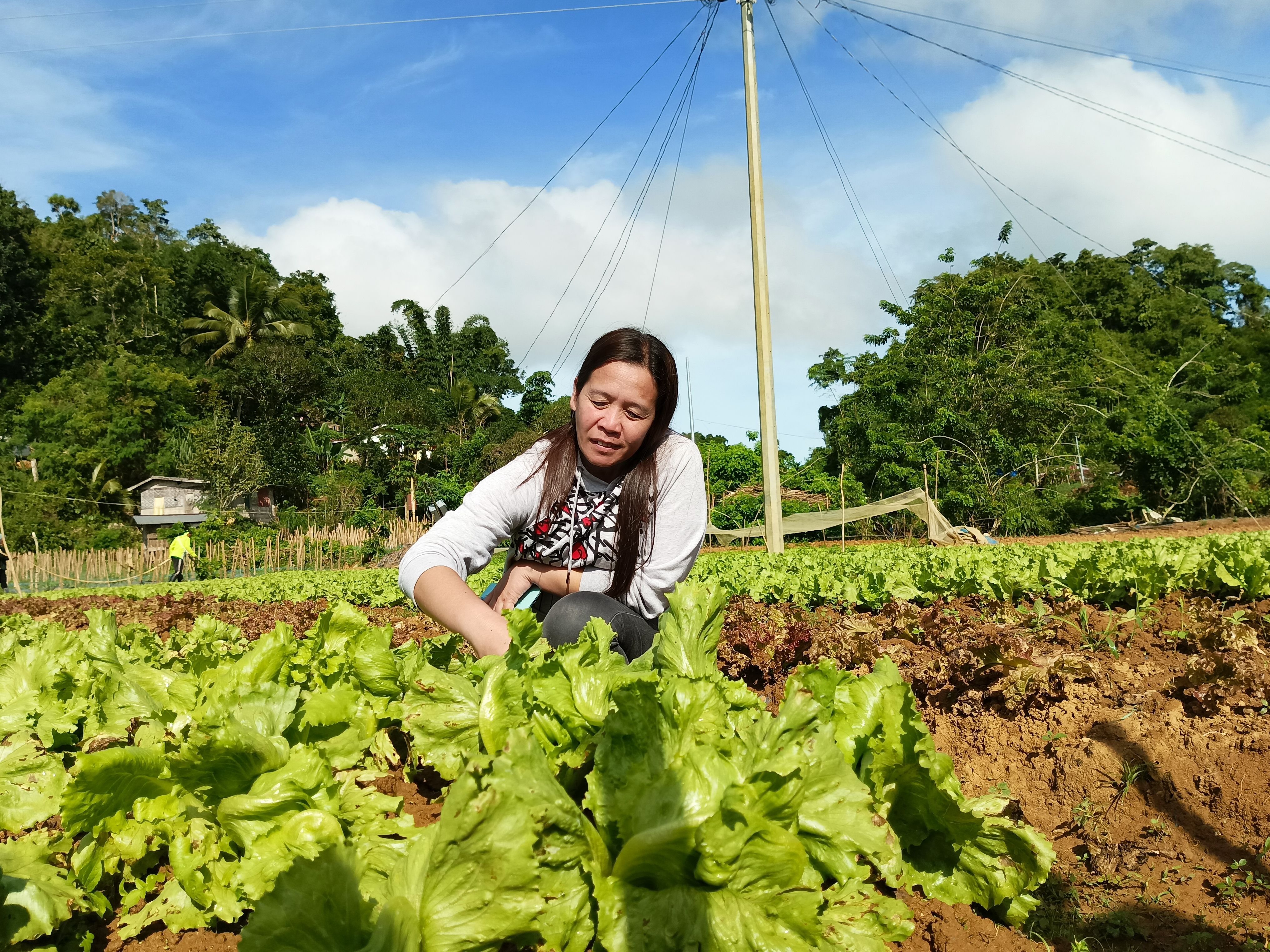
With a vast family-owned agricultural land, Ligaya and her siblings have become both managers and laborers of the portion of land each inherited.
“The iceberg and red lettuce would be ready for harvest soon," Ligaya said, glancing over her fields, mindful of rotating crops to avoid pests and prevent soil nutrient depletion.
Alongside their rows of all classes of lettuce, they also tend tomatoes, with spring onions nestled in between. Nearby, they are preparing fresh plots for native pechay, finger peppers, and Baguio beans, expanding their harvest with each passing season.
Around a hundred meters out lies Tal's farm, also sustained by the cooperative for almost a decade now. The only sound breaking the calm of his farm is the gentle hiss of water from the hoses rising towards his crops.
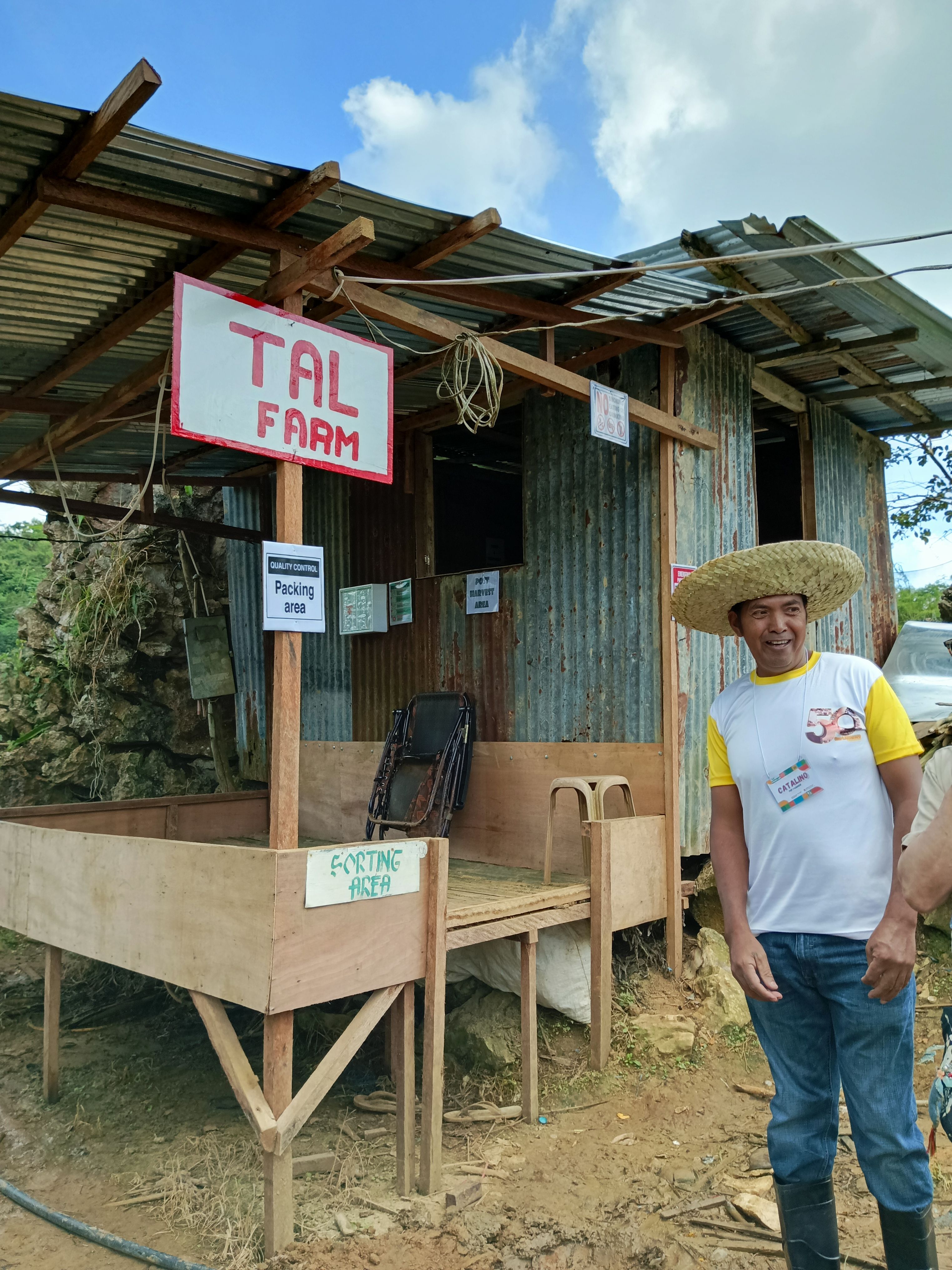
Tal Panaginip, once a garment factory worker in Cavite, lost his parents when he was in the fifth grade, leaving him and his two siblings to divide their family’s quarter-hectare farm.
Now tending to lettuce, spring onions, Chinese cabbage, and chili peppers, he sells most of his harvest to the cooperative, with a small share reaching other markets.
"When the quality isn't up to par, that’s what goes to others," he said.
Tal recalled his time in an informal settlement in Cavite, where he worked as a factory laborer, chasing a dream that never materialized.
"We thought life in ‘Manila’ would be better," he said. Although farming was not Tal Panaginip’s dream, he now decided against going abroad to spend his life growing his farm.
Now, at 43, he’s building a life with his wife and their five children, the eldest of whom is now 13.
Just a short walk away, Junrey Ubod's farm rests at the foot of the hill. Junrey had spent 22 years as a farmer, starting at 17 in a family of farmers.
He’s intercropping lettuce and onions on his quarter-hectare plot, tomatoes, and ampalaya on another farm.

Plants vs. armies
By day, Ligaya, Tal, and Junrey would tend to their onions. By night, the harabas (armyworms) would harvest them. Every farmer dreads leaving their farms when the night comes, only to return and find the harabas have swarmed the crops overnight.
They’d say that crop vulnerability to these kinds of pests has increased due to climate change.
Beyond these relentless armyworms, farmers now face another worry: the increasing strength of typhoons battering their fields.
Typhoons in the Philippines have become such frequent visitors that they almost feel like expected guests. Helpless, Tal lets the storm tear through his farm as if offering up his hard-won harvest to a monstrous giant.
When pests and nature conspire against them, farmers know they can’t afford to be divided. This is where the Lamac MPC steps in, introducing the concept of clustering, which organizes farmers into groups based on their crop specialties. To avoid flooding the market with any one product, they agree to diversify, each hand bringing forth a different bounty.
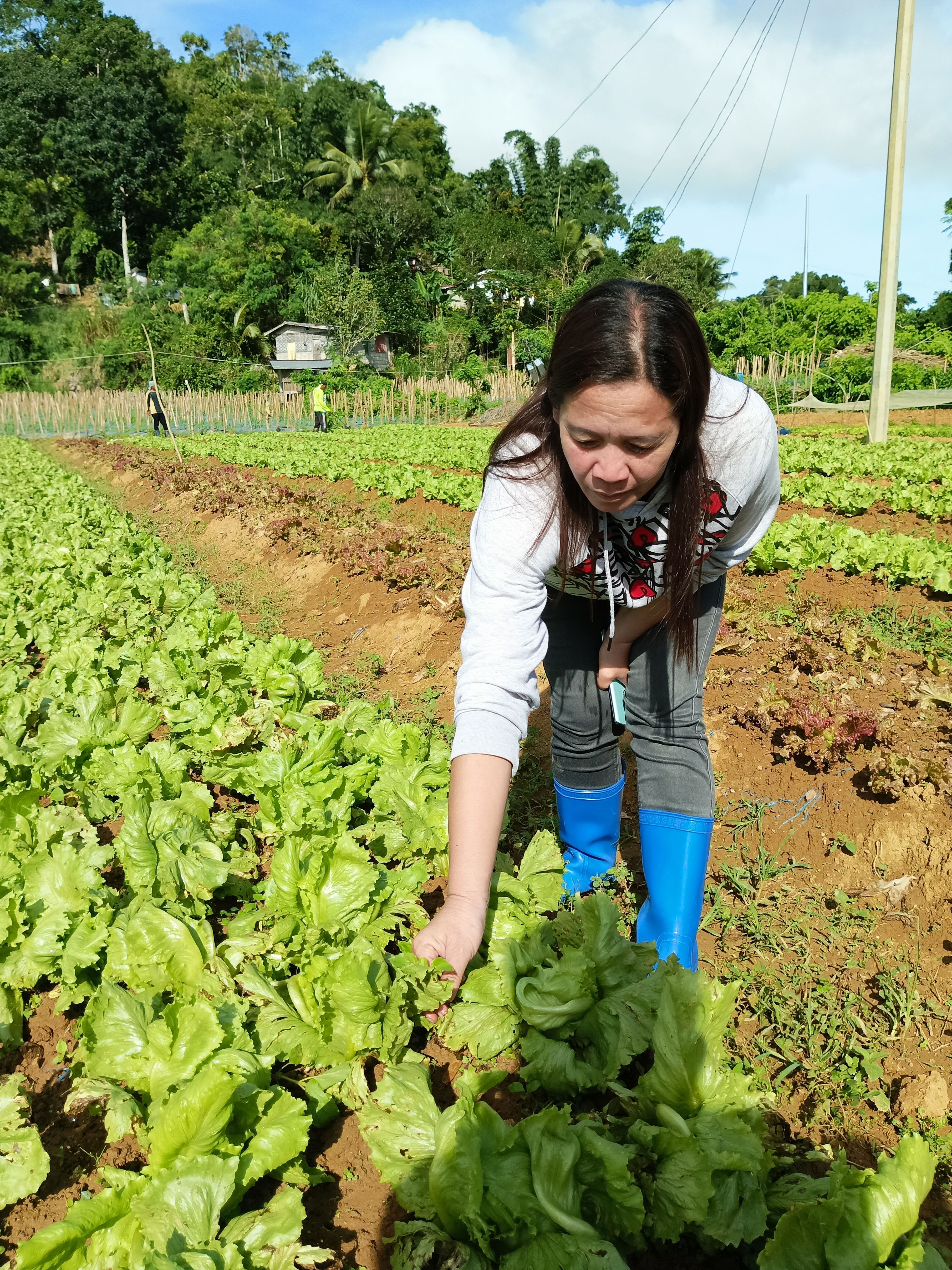
To master the ways of the weather, the Jollibee Group Foundation (JGF), through the Farmer Entrepreneurship Program (FEP), arms these farmers with agri-technologies such as daily weather forecast notifications.
“Beyond our regular training on the agro-enterprise clustering approach, we’ve introduced innovative technologies designed to assist them in overcoming the challenges brought by climate change,” Ma. Laize Ar Cruzat, JGF senior manager, said.
“That’s the kind of technology we need,” she asserted. Gone are the days when farmers would simply look to the sky, guessing if the next day would bring rain.
“It takes the guesswork out of when to fertilize, especially since rain can wash it away, and fertilizer is so expensive,” Cruzat pointed out.
These technologies are woven into the farmers’ daily practices, a defense against the twin threats of income loss and resource wastage.
A village to grow a farm
During the busier seasons, when the farm’s demands become overwhelming, Ligaya, Tal, and Junrey all seek laborers to help manage the workload.
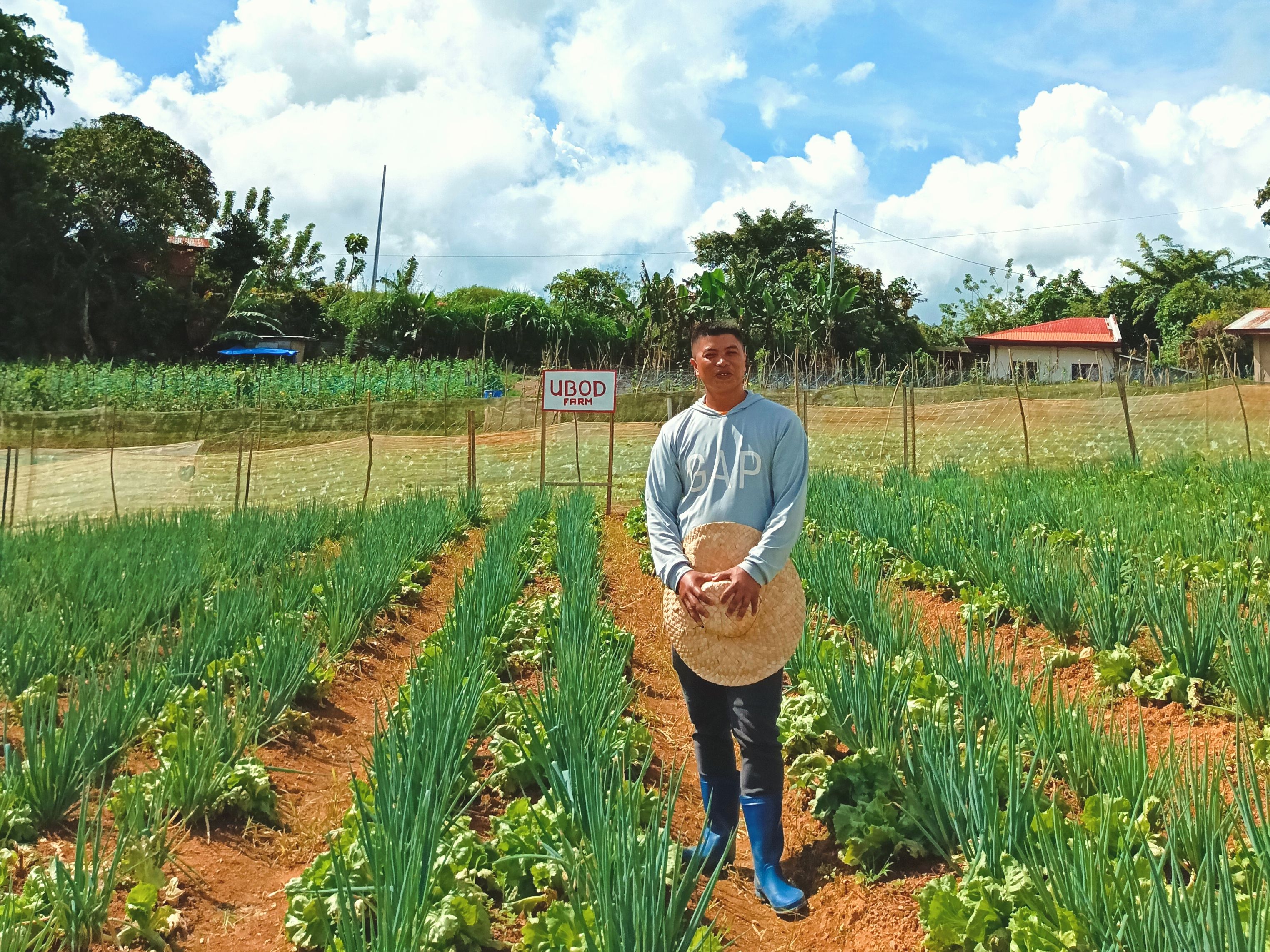
Much like the stream of water cascading from their hoses, the labor they share with their neighbors becomes a shared source of life.
They reflected on how they had never experienced having buyers lined up while they were still planting, but now they enjoy consistent demand for their produce.
Also, through Lamac MPC, they enjoy financial support through low-interest loans and insurance tailored for farmers, focusing on inputs rather than cash.
Loans are based on a farm plan and budget, ensuring members can assess their capacity to pay while receiving necessary resources.
Beyond these financial aids, Junrey would talk about good agricultural practices (GAP) they learned from the entrepreneurship program. One of these techniques includes knowing when to add or cut back on fertilizers, being cautious about the usage of pesticides, and the like.
Fields of profit
Since joining a cooperative, the farmers of Brgy. Sudlon II in Cebu City have relied on hyper-localized weather forecasts to guide their practices.
”I’ve really been waiting for that," Ligaya said, noting that their livelihood is tied to the weather forecast, each prediction a shield against losses. Without it, the rains could cost them thousands, especially the delicate leafy crops that withered under too much water.
With this initiative, around P15,000 is saved monthly, boosting their take-home income to around P20,000 to P50,000 depending on the demand for their produce.
Previously, Ligaya focused only on the farm, but joining the Lama MPC opened up new opportunities for additional income, like live selling, vending machines, and GCash services.
Despite these ventures, farming remains her main source of livelihood, and she supplies produce to markets like Jollibee and various hotels in Cebu.
Tal, for over the past eight years, gradually saved enough for a house, a motorcycle, and a multi-cab, each step hard-earned with patience. Their home, a 15-minute walk from the farm, came together slowly, piece by piece.
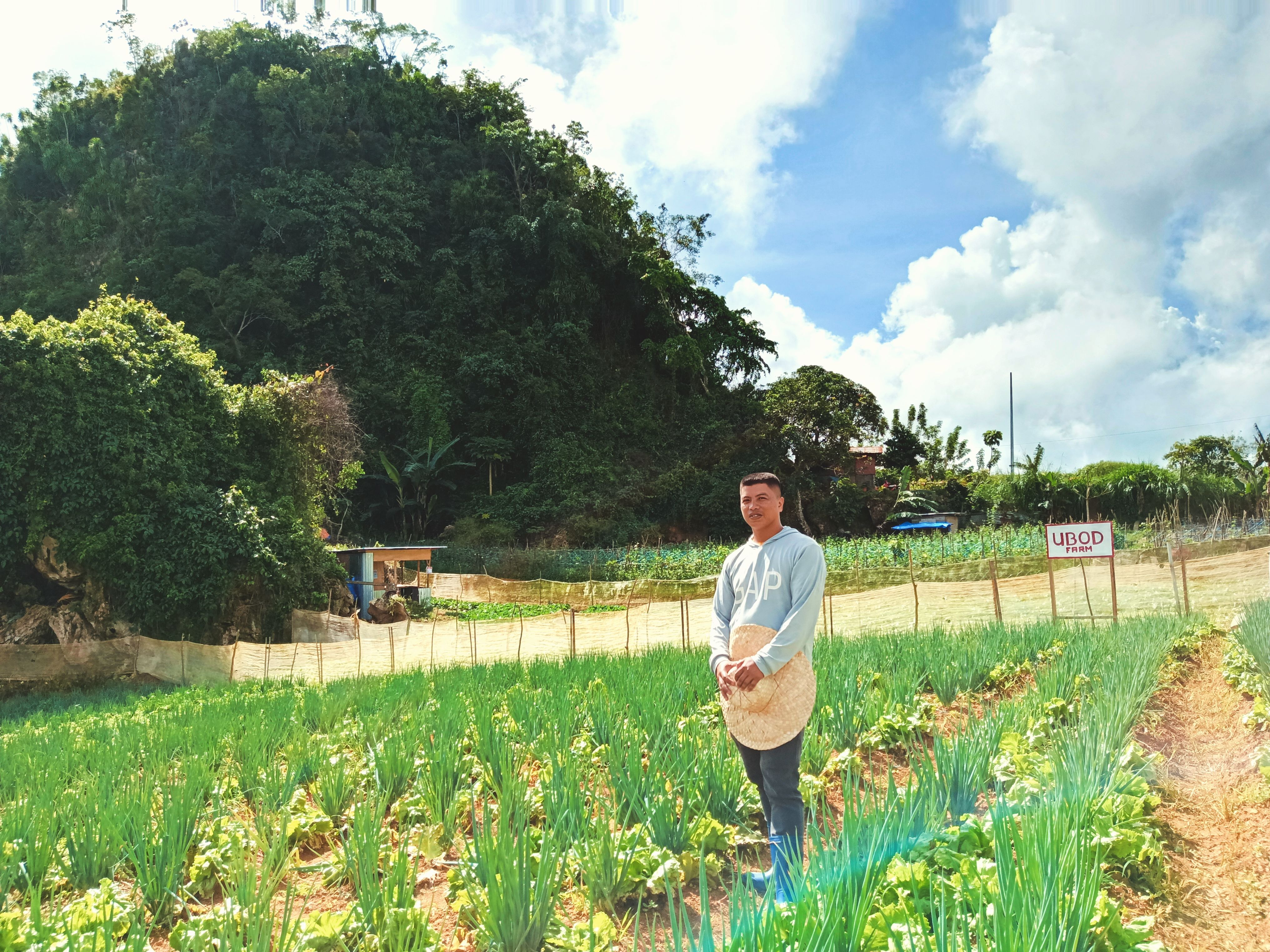
Junrey also boasted a net income of P40,000 from lettuce alone, not including his onion profits. The earning potential of his crops provides for his family of five.
Their freshly plastered house stood among other newly constructed homes, an extension of a motorbike and a post-harvest facility.
In the future, he dreams of gradually owning a multi-cab to transport his crops directly to Jollibee stores in the province.
Since the onset of the Covid-19 pandemic, the local Cebu farmers have directly supplied around 14,000 metric tons of vegetables to JFC stores.
Justine Lynn C. Limocon, Lamac MPC Operations Manager, said the company has set a target to directly supply 80 JFC stores in Cebu by 2025, expanding its coverage from almost half to nearly 80 percent of all stores.